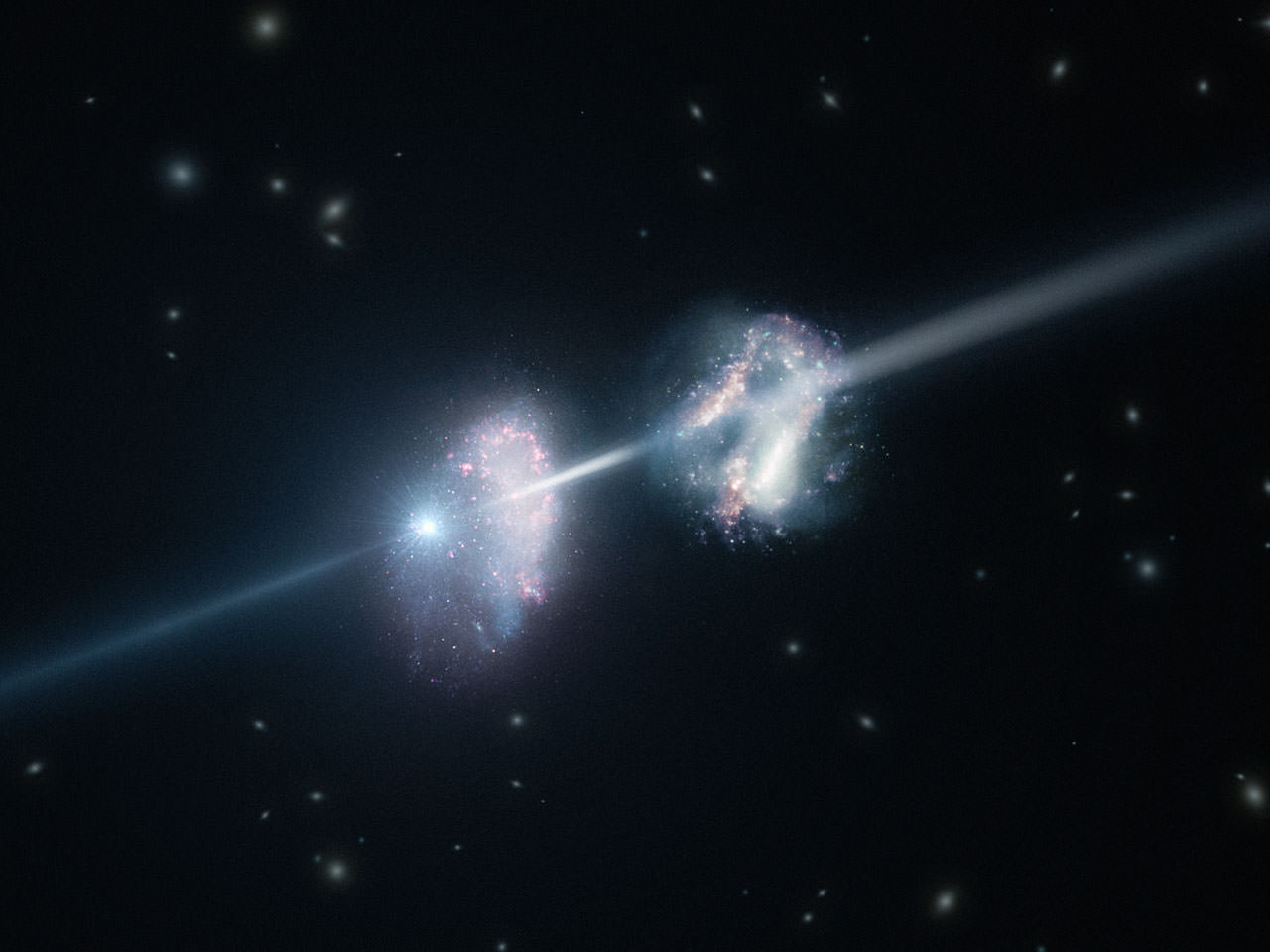[/caption]
“Shot through the heart and you’re to blame…” There’s nothing more powerful than a gamma-ray burst. These abrupt, mega-bright events are captured by orbiting telescopes where the information is immediately relayed to the ground for observation in visible light and infra-red. Some events are so powerful that they linger for hours or even days. But just how quick can we spot them? A burst cataloged as GRB 090323 was picked up by the NASA Fermi Gamma-ray Space Telescope, then confirmed by the X-ray detector on NASA’s Swift satellite and with the GROND system at the MPG/ESO 2.2-metre telescope in Chile. Within a day it was being studied by ESO’s Very Large Telescope. It was so intense it penetrated its host galaxy and another… heading out on a 12 billion light year journey just to get here.
“When we studied the light from this gamma-ray burst we didn’t know what we might find. It was a surprise that the cool gas in these two galaxies in the early Universe proved to have such an unexpected chemical make-up,” explains Sandra Savaglio (Max-Planck Institute for Extraterrestrial Physics, Garching, Germany), lead author of the paper describing the new results. “These galaxies have more heavy elements than have ever been seen in a galaxy so early in the evolution of the Universe. We didn’t expect the Universe to be so mature, so chemically evolved, so early on.”
As the brilliant beacon passed through the galaxies, the gases performed as a filter, absorbing some wavelengths of light. But the real kicker here is we wouldn’t have even known these galaxies existed if it weren’t for the gamma-ray burst! Because the light was affected, astronomers were able to detect the “composition of the cool gas in these very distant galaxies, and in particular how rich they were in heavy elements.” It had been surmised that early galaxies would have less heavy elements since their stellar populations weren’t old enough to have produced them… But the findings pointed otherwise. These new galaxies were rich in heavy elements and going against what we thought we knew about galactic evolution.
So exactly what does that mean? It would appear these new, young galaxies are forming stars at an incredible rate. To enrich their gases so quickly, it’s possible they are in a merger process. While this isn’t a new concept, it just may support the theory that gamma-ray bursts can be associated with “vigorous massive star formation”. Furthermore, it’s surmised that rapid stellar growth may have simply stopped in the primordial Universe. What’s left that we can observe some 12 billion years later are mere shadows of what once was… like cool dwarf stars and black holes. These two newly discovered galaxies are like finding a hidden stain on the outskirts of the distant Cosmos.
“We were very lucky to observe GRB 090323 when it was still sufficiently bright, so that it was possible to obtain spectacularly detailed observations with the VLT. Gamma-ray bursts only stay bright for a very short time and getting good quality data is very hard. We hope to observe these galaxies again in the future when we have much more sensitive instruments, they would make perfect targets for the E-ELT,” concludes Savaglio.
Original Story Source: ESO Press Release. For Further Reading: Super-solar Metal Abundances in Two Galaxies at z ~ 3.57 revealed by the GRB 090323 Afterglow Spectrum.

